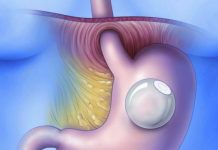Cardiac catheterization, a common diagnostic procedure is done to examine the flow of blood to the heart and test how well the heart is pumping.
It is an invasive imaging procedure, in which a long, narrow tube called as catheter is inserted into the blood vessel in the leg or arm and directed to the heart with the help of X-ray machine.
Contrast dye is injected into the catheter so that X-ray movies of coronary arteries, valves and heart chambers can be generated.
Why is cardiac catheterization procedure used?
The main purpose of cardiac catheterization is:
- to estimate or confirm the existence of heart diseases such as heart valve disease, aorta disease and coronary artery disease;
- to estimate the functioning of heart muscles; and
- to verify the need for further treatments, such as bypass surgery or interventional procedure.
How risky is the cardiac catheterization procedure?
Generally, this procedure is safe. As any invasive procedure includes some risks, it is essential to take special precautions to decrease the risks. Cardiac catheterization risks are very rare but may include:
- Heart attack
- Blood clots
- Abnormal heart rhythms
- Stroke
- Infection
- Bleeding at the site of puncture
- Perforation of blood vessel
- Death
- Damage of the arteries
- Kidney damage or kidney failure
- Allergy to the dye
- Air embolism
- Death
Before undergoing the procedure, you should not take medications like anticoagulants as they can interfere with normal blood clotting. Diabetic patients should ask their therapist for guidelines regarding any specific instructions.
Inform your therapist if you have allergic reactions to any substances such as strawberries, iodine, dyes, or shellfish.
Dye injected during the procedure can cause flushing across your entire body, headache, nausea, and pulsating heartbeat palpitations. The procedure takes half an hour.
What happens after undergoing the cardiac catheterization procedure?
If the catheter is inserted in your arm, it is removed and closed with stitches and bandage. You need to put the arm straight for at least an hour. You can safely walk around and you will be kept under observation for few hours to ensure that you are feeling well.
If the catheter is inserted in your groin area, the sheath will be detached. Incision is closed with stitches and a collagen seal. Collagen sheath is a protein material, which works with the body’s natural healing process.
In order to avoid the infection, a sterile dressing is located on the groin region. You need to lay flat and keep your leg straight for two to six hours to prevent bleeding. Don’t raise your head more than 30 degrees. Raising your head without pillows can put pressure on the groin. Don’t sit or stand by yourself.
Following instructions are generally given after the cardiac catheterization procedure:
- Exercise and exertion, avoid lifting heavy objects. Don’t do strenuous exercises or intercourse for 24 hours after undergoing the procedure.
- Properly care for the incision area. Soreness and bruising are normal. Swelling, severe pain or inflammation need special attention.
- Use medications regularly.
- Avoid driving for 24 hours after undergoing the procedure.












